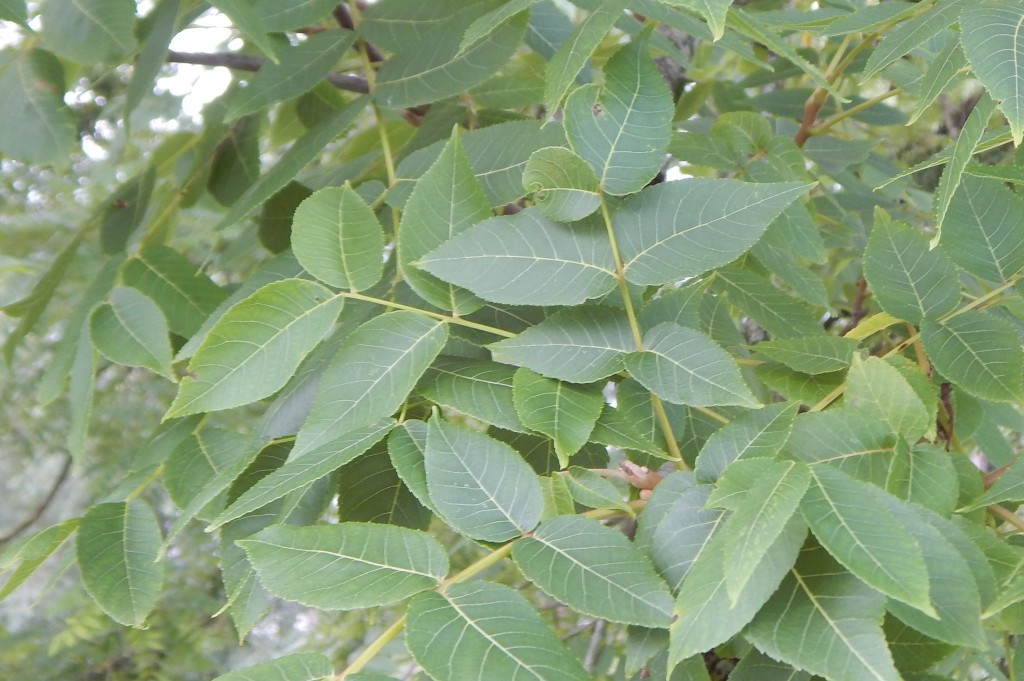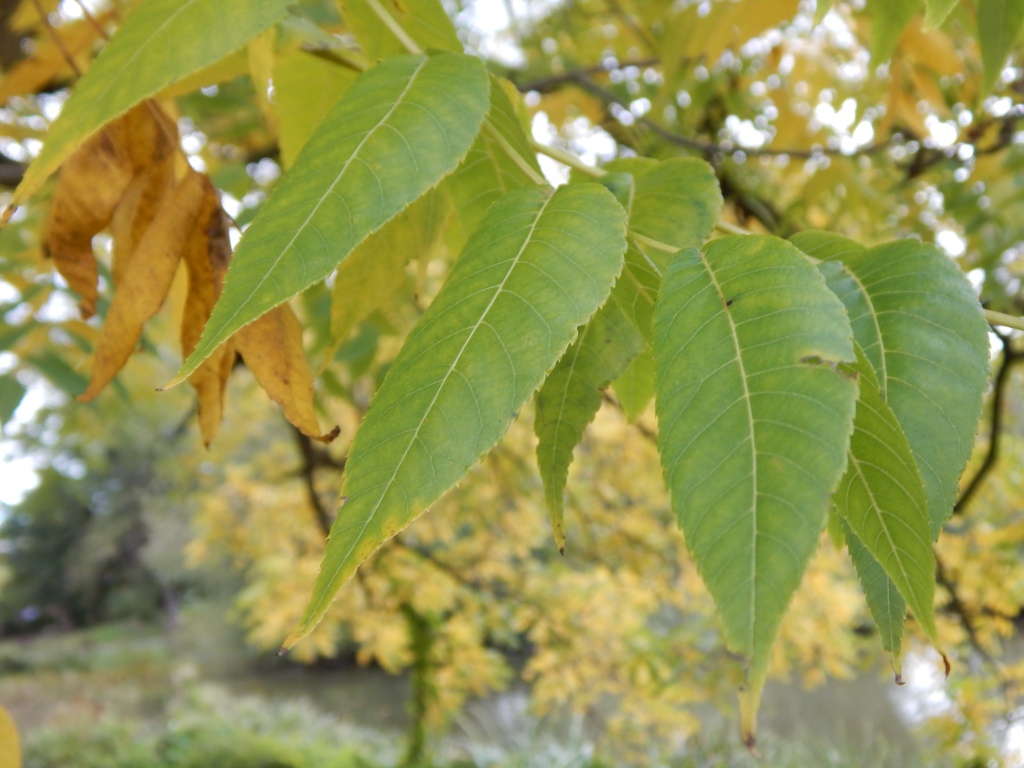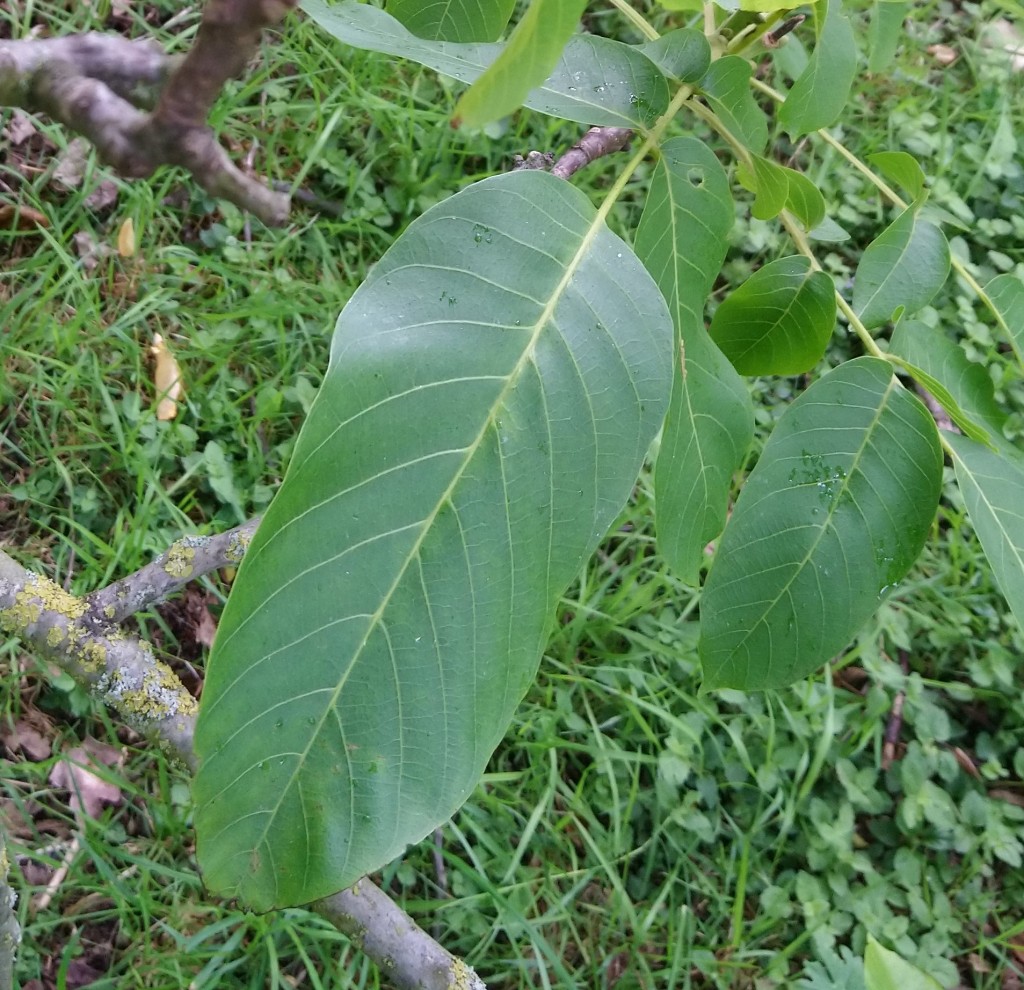
[189] Juglans nigra, Black Walnut
Juglans regia, Persian Walnut
Introduction
Juglans nigra, the Black Walnut, and Juglans regia, the Persian Walnut, are two types of trees that produce the familiar walnuts.
Juglans nigra is also called the Eastern American Black Walnut and is cultivated for its timber
Jugland regia is also called the English Walnut, the Carpathian Walnut, the Madeira Walnut, or in the UK just the (Common) Walnut. It is the origin of the cultivated varieties that produce edible walnuts.
All the other species of Juglans are called walnuts, apart from Juglans cineraria, known as the Butternut.
Taxonomy
Kingdom – Plants
Division – Vascular Plants
Class – Angiosperms (Flowering Plants)
Order – Fagales
Family – Juglandaceae
Subfamily – Juglandoideae
Tribe – Juglandeae
Subtribe – Juglandinae (Walnuts and Wingnuts)
Genus – Juglans
Scientific Names – Juglans nigra, Juglans regia
Cultivars are available. These include other Juglans species and some hybrids.
Name
Walnut comes from Old English wealh-hnutu, meaning foreign nut, as it was introduced to England from continental Europe.
Juglans, the Latin for walnut, is often attributed as Jovis glans, the nut of Jupiter, but is also said to come from jugulandam (cognate with ‘jugular’ vein) meaning that its ‘throat must be cut.’ This refers to the peculiar shape of the nut, which splits and breaks into two halves. Of course, nigra means black and regia means royal.
Walnuts
Almost all species of Juglans are native to parts of the Americas. They are sturdy trees and come from the order Fagales, which includes many other common trees – [017] Alder, [142] Beech, [051] Birch, [069] Chestnut, and [292-3] Oak. Most of the other well-known Trees are either Conifers or in the Rose family.
I’m assuming that you know what a walnut looks like. They are one of the main cultivated culinary nuts. In terms of overall production coconuts and peanuts far outweigh the others. Apart from these, the top three are Cashew nuts, almonds and walnuts, with over two million tonnes of walnuts produced annually.
I won’t go into the morphology of the fruits, which have been wrongly called drupes but are actually drupe-like nuts.
Black Walnut
Juglans nigra is native to an area of eastern North America and is now widely cultivated elsewhere. Its nuts are edible but not normally used because those of Juglans regia are easier to extract. It is used for timber.
It is cultivated in the UK as an ornamental tree in parks. It can grow to a height of thirty or forty metres so is not suitable for small gardens.

The leaves are pinnately compound. I won’t define ‘pinnately compound’ as you can see from the pictures.





The fruits are large, green, spherical and very hard.




Persian Walnut
It is not easy to define the origins of this species accurately. Juglans regia is considered to have been native to an area from the Balkans to China. There are still extensive natural forests in Kyrgyzstan.
It was introduced to Macedonia and Greece by Alexander the Great (356-323 BC) as the ‘Persian Nut.’ It was cultivated into varieties to produce better fruits and was spread by the Romans into southern Europe and northern Africa. It soon spread to the rest of Europe and was introduced to the Americas as early as the Seventeenth Century. It is now extensively cultivated in temperate zones – not in the UK.
The nuts are used in the traditional cuisine of Iran (formerly known as Persia.) They are usually eaten fresh but are also pressed to produce walnut oil. Many modern cultivars have been produced with larger nuts and thinner shells.
Juglans regia looks similar to Juglans nigra. The leaves are darker and not so narrow.



Grafting
There are many cultivars of both Juglans regia and Juglans nigra as well as other species and some hybrids. Generally, Juglans regia is preferred for nut production and Juglans nigra is a more robust and disease-free tree. So, for horticultural use, young Juglans regia seedlings are generally grafted on to mature trees of Juglans nigra or other species.
Most production comes from China and California. In the UK, walnuts are grown for ornamental use only but they are still often grafted onto a different species as rootstock.
See also
Look out for [285] Caucasian Wingnut, a close relative.

Pingback: [285] Pterocarya fraxinifolia, Caucasian Wingnut | The Species of Britain